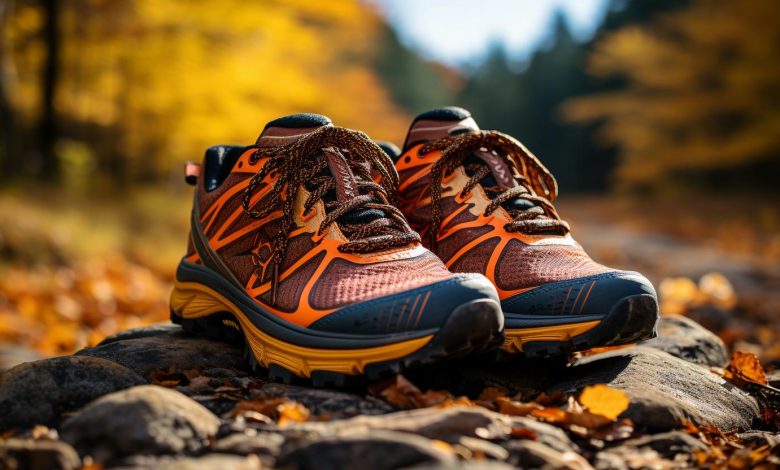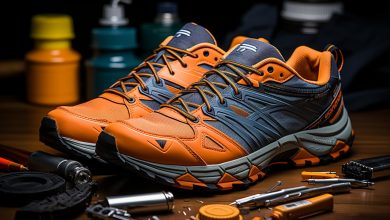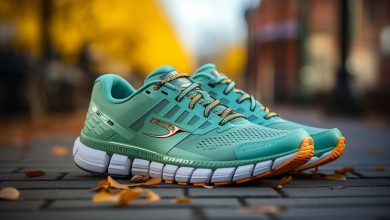Reader’s Choice: Top Gear Recommendations From the Running Community

Imagine yourself sprinting through the crisp morning air, your heart pounding in rhythm with each stride. You’re on a quest for the perfect gear that will elevate your running experience to new heights.
Look no further, because this article is here to guide you. We’ve tapped into the wisdom of the running community to bring you their top gear recommendations.
From shoes that conquer any terrain to recovery tools that soothe tired muscles, get ready to discover the ultimate arsenal for runners like yourself.
Best Running Shoes for Different Terrains
If you’re looking for the best running shoes for different terrains, you’ll want to check out these recommendations from the running community. When it comes to trail running, there are a few key features that make a shoe stand out. Look for shoes with aggressive outsoles and deep lugs to provide traction on uneven and slippery surfaces. Some popular options include the Salomon Speedcross and the Brooks Cascadia. These shoes are designed to keep you stable and secure as you tackle off-road adventures.
On the other hand, if road running is more your style, there are plenty of great options available as well. Shoes like the Nike Pegasus and the Asics Gel-Kayano are top choices among pavement pounders. They offer cushioning and support to help absorb impact and keep your feet comfortable during long runs.
Whether you prefer trail or road running, finding the right pair of shoes is crucial for a successful run. The proper footwear can make all the difference in terms of comfort, performance, and injury prevention.
Now that we’ve covered the best running shoes for different terrains, let’s move on to must-have accessories that every runner should consider adding to their gear arsenal.
Must-Have Running Accessories for Every Runner
To enhance your running experience, make sure you have all the must-have accessories for every runner. High performance hydration and injury prevention techniques are two key areas to focus on.
When it comes to hydration, investing in a high-performance water bottle or hydration pack is essential. Look for features like easy-to-use valves, leak-proof designs, and lightweight materials that won’t weigh you down during your runs. Staying properly hydrated will not only improve your performance but also prevent fatigue and cramping.
Injury prevention is another crucial aspect of running. To protect yourself from common running injuries like shin splints or knee pain, consider adding accessories such as compression sleeves or braces to your arsenal. These can provide extra support and stability to vulnerable areas of your body while reducing muscle fatigue.
Additionally, incorporating injury prevention techniques into your routine can work wonders. Stretching before and after each run helps loosen up tight muscles and increase flexibility, reducing the risk of strains or pulls. Foam rolling is another effective technique that eases muscle tension and promotes faster recovery.
Top Fitness Trackers for Tracking Your Runs
One of the most popular fitness trackers for tracking your runs is the Garmin Forerunner. This sleek and advanced device not only helps you keep track of your distance, pace, and heart rate but also provides valuable insights into your running performance. With features like GPS tracking, interval training mode, and personalized goal setting options, the Garmin Forerunner takes your running to a whole new level.
When it comes to improving your running performance, interval training is key. The benefits of interval training are numerous – it helps increase speed, build endurance, and burn more calories. With the Garmin Forerunner’s interval training mode, you can easily incorporate this effective training method into your runs. Set up intervals based on time or distance, and let the watch guide you through each phase with alerts and prompts.
Staying motivated while tracking your runs is crucial for reaching your goals. The Garmin Forerunner offers features that help you stay focused and committed to your fitness journey. You can set daily step goals to ensure you are staying active throughout the day or create custom workout plans tailored to your specific needs. By monitoring progress and celebrating milestones along the way, you will stay motivated and inspired to continue pushing yourself.
Essential Clothing and Gear for Cold Weather Running
Stay warm and comfortable during your cold weather runs with the essential clothing and gear options available. When it comes to running in chilly temperatures, layering is key. By strategically adding and removing layers throughout your run, you can maintain a comfortable body temperature and avoid overheating or getting too cold. Here are some layering techniques for staying warm during cold weather runs:
| Base Layer | Mid Layer |
|---|---|
| Moisture-wicking fabric | Insulating material such as fleece or down |
| Helps keep sweat away from your skin | Traps heat and provides insulation |
| Form-fitting to prevent chafing | Adds warmth without adding bulk |
For the outer layer, choose a windproof and water-resistant jacket to protect you from the elements. Don’t forget about accessories like hats, gloves, and neck gaiters to keep your extremities warm.
In addition to proper layering, it’s important to take precautions against common cold weather running injuries. The colder temperatures can increase the risk of muscle strains and sprains. Make sure to warm up properly before each run by doing dynamic stretches and gradually increasing your pace. After your run, cool down with static stretches to help prevent post-run stiffness.
If you do experience an injury, remember the RICE method: Rest, Ice, Compression, Elevation. Taking care of any minor injuries promptly can help prevent them from becoming more serious.
Top Recovery Tools for Post-Run Muscle Relief
Looking for ways to relieve your muscles after a run? Try incorporating foam rolling and stretching into your post-run routine for quick muscle relief. Here are three effective techniques and tools that can help speed up your muscle recovery:
1. Foam rolling: This self-massage technique involves using a foam roller to apply pressure to specific areas of your body. By targeting tight or sore muscles, foam rolling helps break up adhesions and knots, promoting better blood circulation and reducing muscle tension. Roll slowly over the targeted area, pausing on any tender spots for 20-30 seconds.
2. Stretching: After a run, it’s important to stretch out your muscles to prevent stiffness and improve flexibility. Focus on stretching major muscle groups such as calves, hamstrings, quadriceps, and hip flexors. Hold each stretch for at least 30 seconds without bouncing or forcing the movement.
3. Compression sleeves: These snug-fitting sleeves provide support and compression to your muscles during recovery. They help increase blood flow, reduce swelling, and minimize muscle soreness after intense workouts or long runs. Simply slip them on after your run for added comfort and relief.
Incorporating these foam rolling techniques and compression sleeves into your post-run routine will not only help alleviate muscle pain but also enhance overall performance by promoting faster recovery times. So give them a try and enjoy the benefits of quicker muscle relief!
Conclusion
Congratulations! You’ve reached the finish line of our article on top gear recommendations from the running community.
Armed with this knowledge, you are now equipped to conquer any terrain and weather condition that comes your way.
Remember, just like a well-oiled machine, having the right gear is essential for optimal performance and enjoyment.
So lace up those shoes, strap on your fitness tracker, and let your runs take flight like a gazelle gracefully leaping through the savannah.
Happy running!






